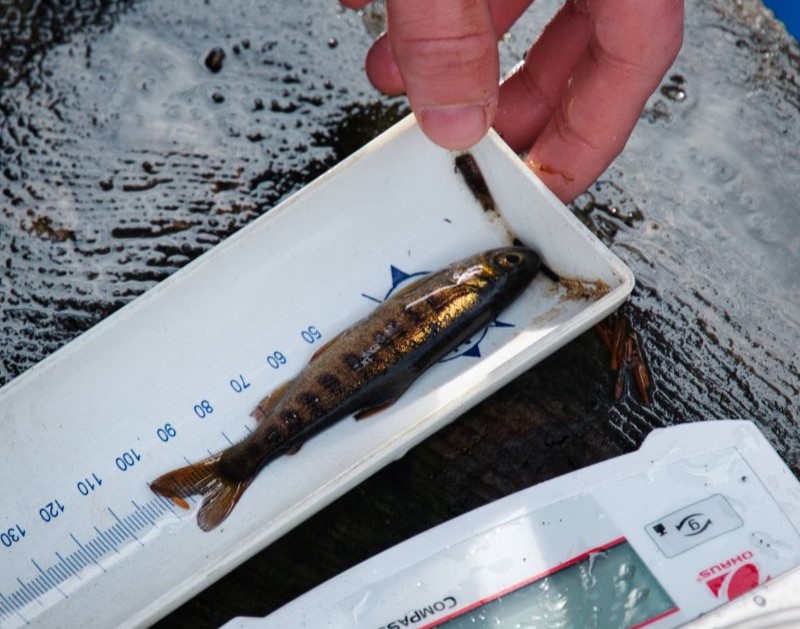Biennial Pink Salmon Spawning Shapes Juvenile Coho Growth in Southeast Alaska

Pink salmon have a strict two-year life cycle that results in distinct populations and biennial differences in spawning abundance. In Southeast Alaska’s rivers, odd-year pink salmon returns are typically larger than in even years and deliver greater pulses of marine-derived nutrients to freshwater ecosystems. These nutrient-rich marine resources, primarily in the form of salmon eggs, influence the growth and survival of stream-dwelling fish such as juvenile coho salmon.
New research led by former ACRC graduate student Kevin Fitzgerald, published in Freshwater Biology, examines how these biennial pink salmon returns shape the growth of juvenile coho salmon in Southeast Alaska. Fitzgerald and collaborators collected data in the upper Montana Creek catchment during 2021, a year with high pink salmon spawning rates, and 2022, a year with low pink salmon returns. Between May and October of each year, juvenile coho salmon were regularly sampled to track their growth and diet, and pink salmon spawning surveys were conducted to estimate spawning activity. Together, this information was used to determine the role of nutritious pink salmon eggs in juvenile coho development.
The findings revealed stark differences in growth patterns between even and odd years. In 2021, when pink salmon were abundant, age-1 coho salmon consumed large quantities of salmon eggs which comprised 78% of their diet biomass during the spawning period. These fish grew significantly larger than fish in even years, with body lengths 17.2% longer and body masses 78.1% heavier than those in 2022. In contrast, the absence of pink salmon in 2022 forced juvenile coho to rely on less energy-dense macroinvertebrates, resulting in slower growth. Age-0 coho salmon, inhibited by their small size and gape limitation, could not consume whole salmon eggs in either year and showed less variation in growth than age-1 individuals.
These findings underscore the critical role of pink salmon life history in shaping patterns of marine derived resource availability and juvenile salmon growth in freshwater. Given existing literature documenting negative impacts of increased pink salmon abundance on marine growth of Coho Salmon, these findings suggest that growth benefits to coho salmon from abundant spawning pink salmon in freshwater may help offset negative impacts later in life. As climate change continues to impact salmon productivity and stream hydrology in complex ways, understanding these dynamics may aid in safeguarding Southeast Alaska’s salmon ecosystems. Congratulations to Kevin and the team!